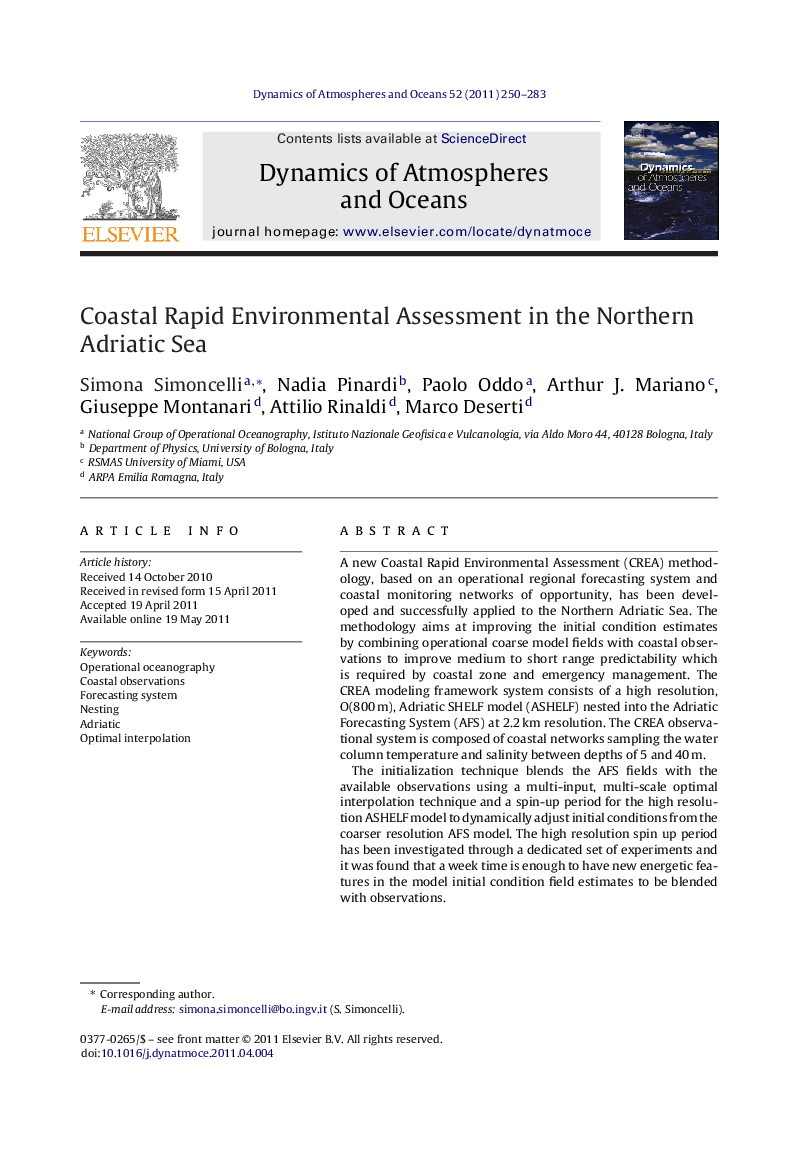| Article ID | Journal | Published Year | Pages | File Type |
|---|---|---|---|---|
| 4674099 | Dynamics of Atmospheres and Oceans | 2011 | 34 Pages |
A new Coastal Rapid Environmental Assessment (CREA) methodology, based on an operational regional forecasting system and coastal monitoring networks of opportunity, has been developed and successfully applied to the Northern Adriatic Sea. The methodology aims at improving the initial condition estimates by combining operational coarse model fields with coastal observations to improve medium to short range predictability which is required by coastal zone and emergency management. The CREA modeling framework system consists of a high resolution, O(800 m), Adriatic SHELF model (ASHELF) nested into the Adriatic Forecasting System (AFS) at 2.2 km resolution. The CREA observational system is composed of coastal networks sampling the water column temperature and salinity between depths of 5 and 40 m.The initialization technique blends the AFS fields with the available observations using a multi-input, multi-scale optimal interpolation technique and a spin-up period for the high resolution ASHELF model to dynamically adjust initial conditions from the coarser resolution AFS model. The high resolution spin up period has been investigated through a dedicated set of experiments and it was found that a week time is enough to have new energetic features in the model initial condition field estimates to be blended with observations.Five CREA study cases have been analyzed for different months of the year, one per month from May to September 2003, chosen on the basis of the availability of the coastal observations for both model initialization and validation. The CREA 7-days forecasts show skill improvements in the coastal area salinity and temperature profiles, deriving from the blending and the spin-up period in the initialization methodology. The main conclusion is that forecasting in coastal areas by nesting necessitates of the observations to correct the coarse resolution model fields providing informations where parent and child model topographies mismatch. Results demonstrate the feasibility of a CREA strategy to support coastal zone management in line with recent operational oceanography developments.
► MREA methodology is applied to the Northern Adriatic coastal area. ► A high resolution coastal model is nested in an operational forecasting system. ► Model initial condition blends coastal observations with operational analysis. ► CREA forecast improves operational products skills in the coastal zone.
